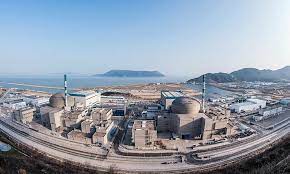China has officially commenced commercial operations at the groundbreaking Shidaowan nuclear reactor, marking the inauguration of the world’s first fourth-generation nuclear facility, according to state media reports on Wednesday.

Situated in Shandong province, the fourth-generation Shidaowan plant sets itself apart from its predecessors by prioritizing enhanced fuel efficiency, improved economics, safety, and a reduced environmental footprint. As China endeavors to meet carbon emissions goals, the adoption of nuclear power has become increasingly pivotal.
Jointly developed by the state-run utility Huaneng, Tsinghua University, and China National Nuclear Corporation, the high-temperature, gas-cooled reactor (HTGCR) boasts a modular design. Modular plants, characterized by capacities below 300MW, can be constructed off-site. Advocates highlight their potential to operate in remote locations and power traditionally challenging heavy industry sectors, while critics argue that they may incur high costs.
NuScale Power, previously expected to secure the first US license for a small modular reactor, recently announced the termination of its planned 462MW project in Utah due to escalating costs.
China’s ambitious energy goals aim to generate 10% of electricity from nuclear sources by 2035 and increase this to 18% by 2060. However, as of September this year, the nation had not met its 2020 target to install 58 gigawatts of nuclear capacity.
In an interesting development, China has refrained from signing a commitment made by 20 countries at the COP28 climate conference in Dubai to triple nuclear power capacity by 2050, reflecting potential nuances in its nuclear energy strategy.






